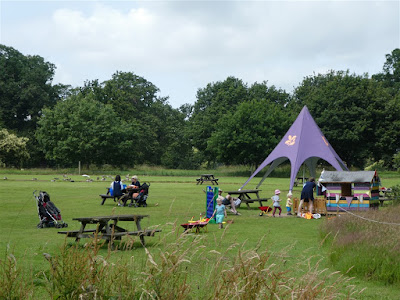Most National Trust properties are old, and there are complicated decisions to be made about what to restore them
to: Medieval, Tudor, Jacobean, Georgian, Regency, Victorian, Edwardian, whatever. It's complicated. Very. The gardens are similar: Renaissance, Italianate, Dutch, Georgian, Victorian...? Often, a garden design, paintings, or even photographs will have survived to guide decisions about how the gardens should be "restored." At Felbrigg no such designs or such exist, just the forest and the large walled garden itself, and the dovecote; and so the head gardener has had free rein to do whatever (s)he thinks appropriate. The end result, we thought, was glorious, the best walled garden we have seen. Olive trees? Flax? In England? we asked. Why? Because we can, was the answer.
 |
The garden tour began with the orangerie, which housed a collection of huge
old camellias; not an orange in sight |
 |
| But it did contain this beautiful old model of the house, as it once was |
 |
In the forest area, what we thought was a "fairy ring" of sequoias, similar to
what we've seen in northern CA |
 |
Our guide beside an ancient twisted sweet chestnut; sweet chestnuts do the twist
when they get really old; anyhow, the guide was superb, knowledgeable not only
about the plants but where they came from and when and why; a retired geographer |
 |
| The giant sweet chestnut |
 |
| Now in the large walled garden, which must be a gardeners' paradise |
 |
For reasons lost on me, they let the pigeons and doves and chickens roam free
in the gardens |
 |
| Lonely new monkey puzzle |
 |
| Felbrigg's dovecote, with accommodations for nearly 1000 birds |
 |
| More walled garden |
 |
| In a greenhouse |
 |
| Fowl in the walled garden; reminded me of Kauai |
 |
| Bottle brush |
 |
| Fuchsias everywhere |
 |
| And flax...stupendous garden! |




































































